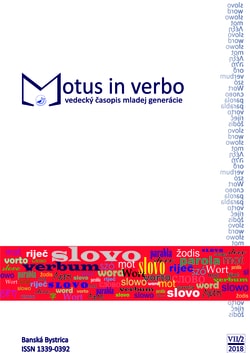ČESKOSLOVENSKÁ EMIGRÁCIA V JUHOSLÁVII A BELEHRADSKÁ ODBOJOVÁ CENTRÁLA V ROKOCH 1939 – 1941
Druga, Ondrej
In: , s. 7 - 15. ISBN:
Abstract
Czechoslovak emigration in Yugoslavia in 1939 – 1941 is a complex topic exceeding to several other issues. Operation of this Balkan emigration route was mostly influenced by the Belgrade headquarters of Czechoslovak resistance movement, which was responsible for care for emigrants and organization of transports. Total number of Czechoslovak citizens emigrated by the organized transports via Yugoslavia in this period reaches to 2000. The situation in Belgrade headquarters was marked by several conflicts inside the resistance movement, both, between Hodža and Beneš fraction and between military and civil part of resistance. As we mentioned in the case of Dr. Rudinský, the Belgrade headquarters had indirect influence on the development of situation in Western European resistance movement by a different approach to arrangement of the necessary travel documents – while Beneš supporters usually reached Western Europe in relatively short time, Some Hodža supporters did not reached it at all. The cooperation of the local Czech and Slovak minority and its institutions, especially the “Czechoslovak union in the Kingdom of Yugoslavia”, was important for the activity of the resistance headquarters. Ján Bulík was the most involved person in the resistance activities among the Czechoslovak diaspora, being an important representative of Vojvodina Slovaks in the thirties of the 20th century. Special attention is to be paid to the emigration of Czechoslovak Jews, which was carried out by both, individual and mass transports. The most influential factor of the operation of the resistance headquarters was the position of Yugoslavian state authorities, which was changing in time. The authorities were tolerant, even hiddenly helpfuI in the early phase, but they were forced to harder actions after the fall of France, which led to a strong diminution of the resistance activity and departure of many resistance members and emigrants. In the late phase, the Czechoslovak emigration community in Yugoslavia consisted mostly of the military intelligence group operatives, which were in the contact with Yugoslavian general staff and departed Yugoslavia only during its fall in April 1941.
Prevziať celé číslo
